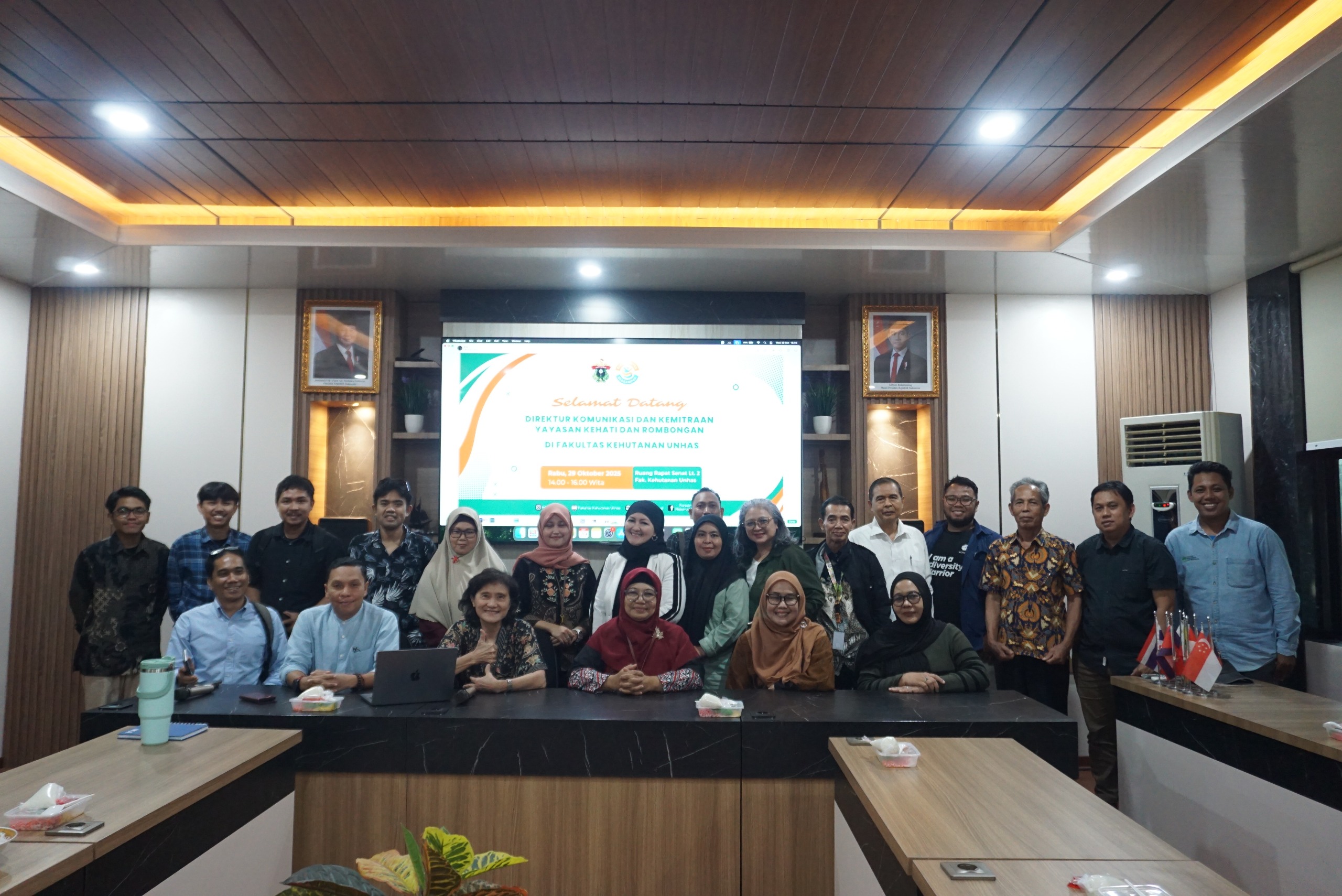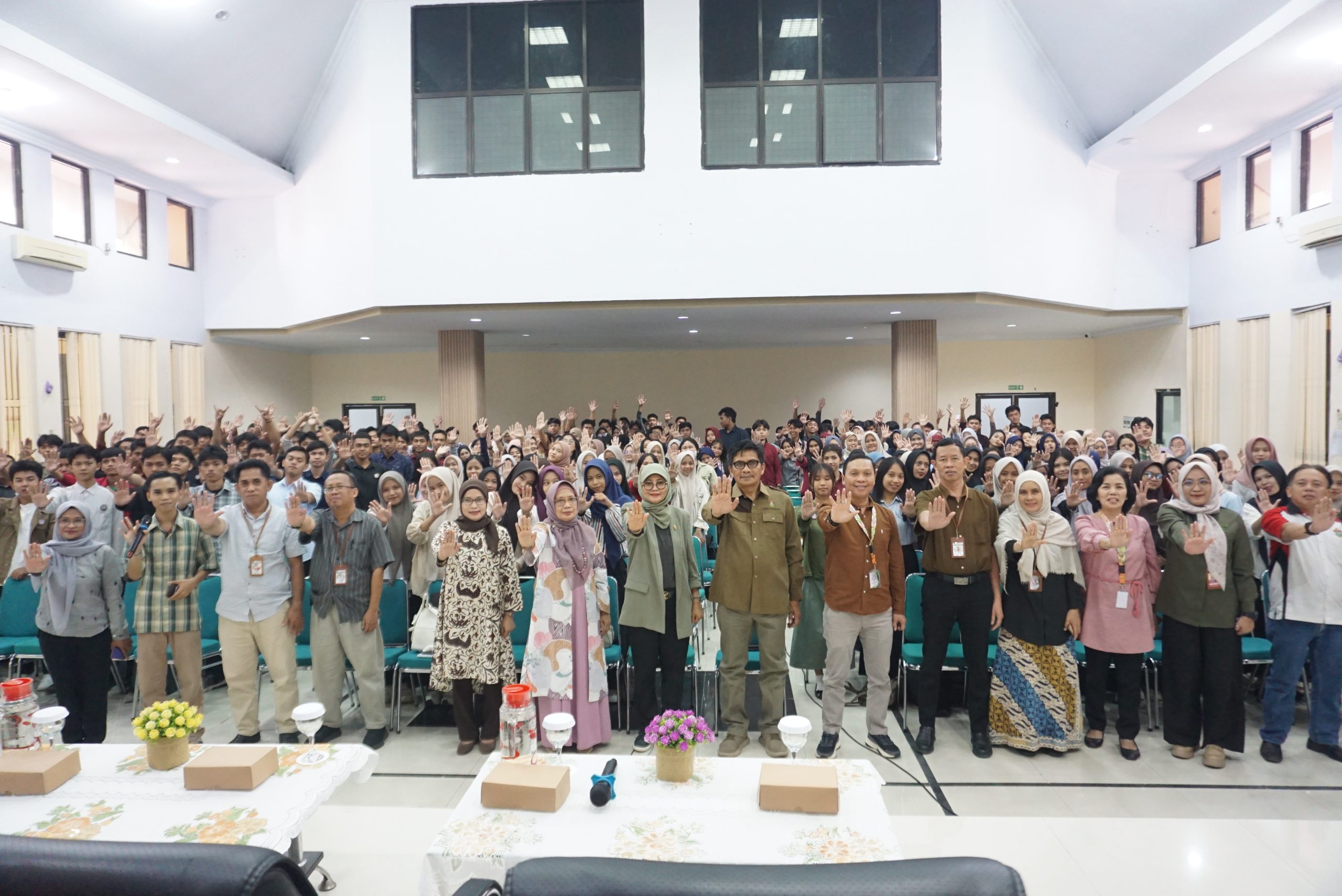Tamalanrea-Makassar. The Forestry Engineering Study Program (Prodi) of the Faculty of Forestry, Hasanuddin University (Unhas) held a public lecture with the theme “Karst and Fungi: A Public Lecture on Mycological Studies”.
The activity took place starting at 10.00 WITA in the 1st Floor Hall of the Faculty of Forestry, Unhas Tamalanrea Campus, Makassar, Thursday (10/4/2025).
Starting the activities of the Deputy Dean for Partnership, Research, Innovation and Alumni of the Faculty of Forestry Unhas, Syahidah, S.Hut., M.Si., Ph.D. In his speech, he expressed his thanks to the resource persons for their presence at this activity and various knowledge about fungi and karst ecosystems in mycological studies.
“Thank you for the presence of the resource persons at this activity, I hope that the material presented will benefit us and all the students who attend this public lecture,” explained Syahidah.
Syahidah further said that the theme raised was quite interesting because mushrooms and karst were very interesting topics to discuss and mushrooms were very important in human life because they had various roles, from food sources to medicinal ingredients. Apart from that, fungi also play a role in the process of decomposition, fermentation and maintaining soil fertility.
The Deputy Dean for Partnership, Research, Innovation and Alumni said that the Dean of the Faculty of Forestry, Unhas, could not join in this activity because he was attending the Unhas graduation ceremony which took place today.
Present as speakers, Otto Miettinen (University of Helsinki) presented material with the theme “Developing molecular research methodology and how it shapes mycology” and Tine Grebenc from the Slovenian Forestry Institute.
Otto Miettinen in his material said that mycology is a branch of biology that studies fungi, including their characteristics, properties and uses. Modern technology in genome analysis that is capable of producing large amounts of DNA sequence data quickly and efficiently is also called High throughput sequencing (HTS) or Next-Generation Sequencing (NGS).
“HTS allows scientists to identify a wide variety of DNA sequences, both with specific genetic regions and entire genetic material,” explained Otto.
Some of the advantages of using HTS technology are that it produces large amounts of sequencing data in a short time (High Throughput), can handle various sample sizes and projects (Scalability) and speeds up the research and testing process.
Tine Grebenc (Slovenian Forestry Institute) delivered material about truffles or hypogeous fungi where the fungus forms a fruiting body (sporocarp) which is partially or completely embedded in the soil (substrate).
Truffles evolved from epigeous ancestors in nearly every major lineage of fungi, evolved over different evolutionary times and taxonomically do not form a single phylogenetic clade.
This activity was guided by Margaretta Christita (PKR Microbial Karst Unhas BRIN. It was attended by 100 participants and went smoothly until 12.00 WITA.






